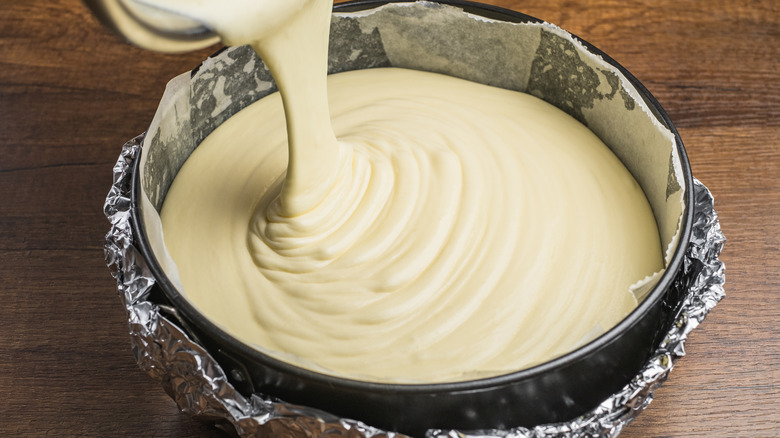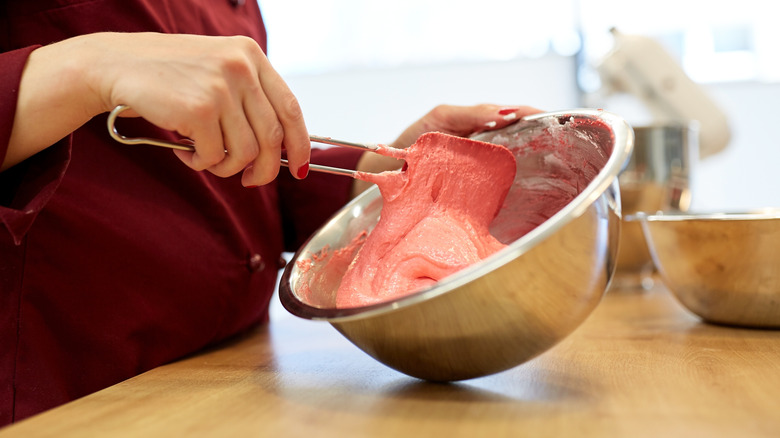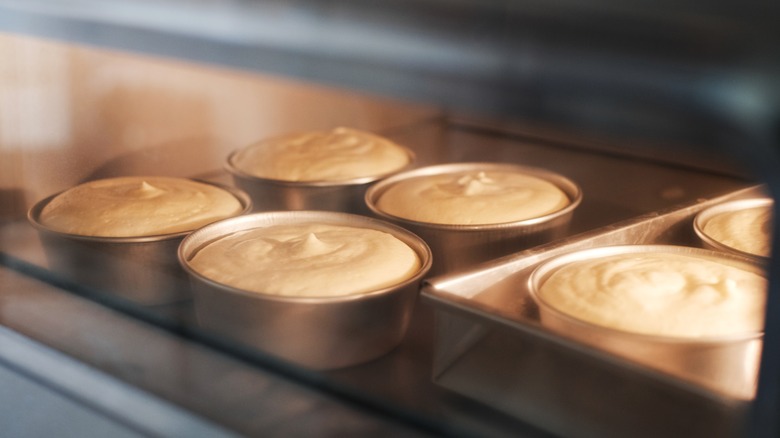What Baking Recipes Mean When They Mention The 'Ribbon Stage'
If you're an avid baker who often follows written recipes, you've undoubtedly come across a handful that call for techniques that require more precision than just mixing or stirring until combined. Meringue pies, for example, require you to whip the egg whites until stiff peaks form, baking bread involves proofing the dough until doubled in size, and when you bake chiffon or angel food cake, you're usually instructed to gently fold the ingredients together. Less frequently, you may also see recipes refer to what's called the ribbon stage of a batter.
While you can easily guess what stiff peaks will look like even if you've never whipped egg whites or heavy cream before, being instructed to "mix until the ribbon stage" may seem confusing at first. In actuality, the ribbon stage is easy to pinpoint when mixing eggs and sugar. It's a point in the mixing process where the batter has a thick enough consistency that it falls (from the beater or spatula) in ribbon-like ripples that hold their shape for a few moments.
How to achieve the ribbon stage
The ribbon stage can occur in any recipe that entails beating together eggs and sugar, most notably sponge cakes and angel food cakes, or French macarons. You'll be able to visually tell when it occurs by testing the batter. Take a scoop of the batter, then let it fall back into the bowl. It should slowly cascade down, as if it were a thick ribbon. This "ribbon" will then hold its shape briefly before melting back into the batter.
During the ribbon stage, the batter can also take on a different color. Instead of having a deep yellow hue from the egg yolks, the batter could turn pale yellow or even white. It will also have increased in volume, and will be visibly foamier. If you're making a sponge cake batter, all these changes typically occur within three to five minutes of beating the eggs (and sugar) in an electric mixer.
The importance of the ribbon stage
If your recipe calls for mixing the batter until the ribbon stage and you stop prematurely, you won't be too pleased with what comes out of the oven. The ribbon stage only occurs when two things happen: first, when the sugar is fully dissolved in the egg; and second, when enough air has been whipped into the batter. These factors directly influence the texture of baked goods.
In sponge cakes, reaching the ribbon stage results in a light and fluffy crumb, so if you undermix the batter, it may turn out dense instead. In macarons, reaching the ribbon stage will ensure the cookies have just the right amount of lift. So when making French macarons, stop folding before achieving that ribbon-like consistency, and the macarons will have too many air bubbles, making them hollow on the inside. Not all dessert recipes use the ribbon stage as an indicator of ideal texture, but if they do, you definitely don't want to undermix the batter.


